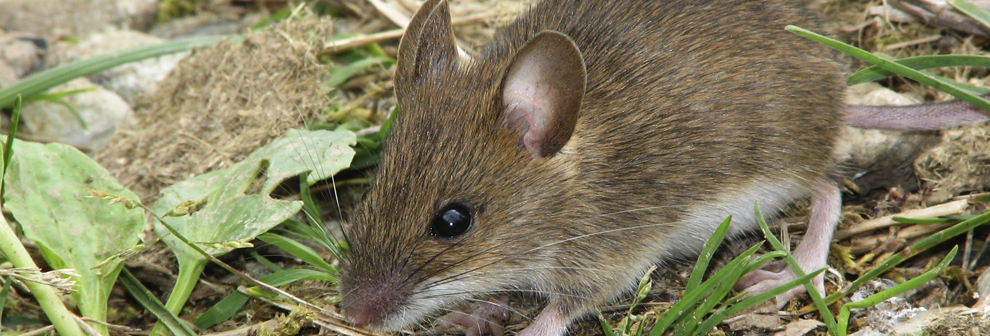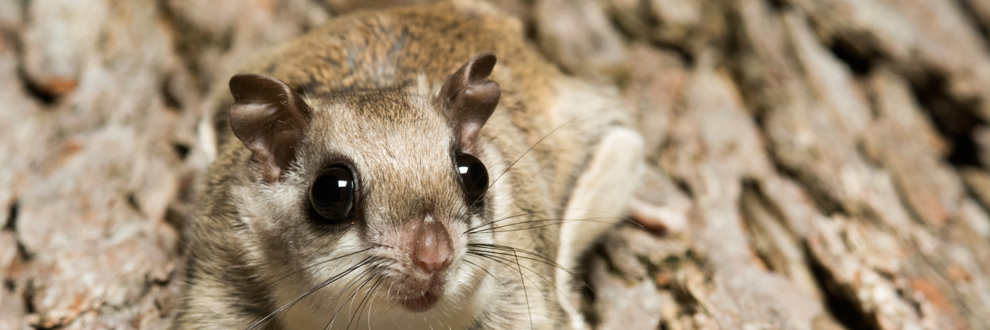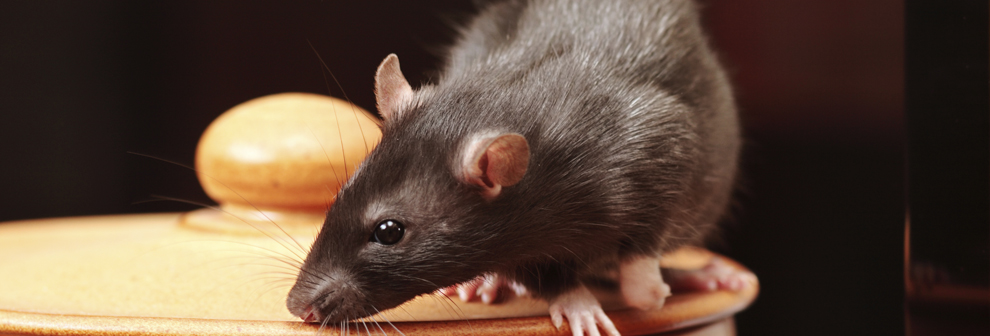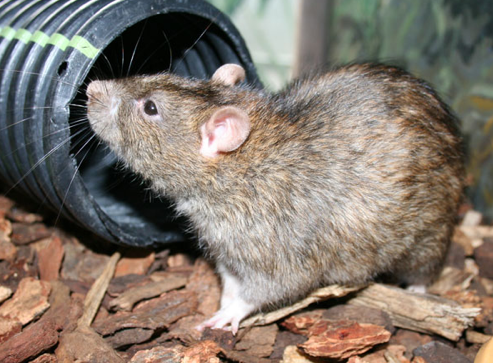Understanding the Two Types of Rats
There are several species of rats in Atlanta and the metropolitan area. The two most common types that experts in Atlanta deal with are the Norway rat and the roof rat. Both thrive in urban environments.
The Norway rat, or Rattus norvegicus, is known by many names, such as brown rat, house rat, sewer rat, wharf rat. They are not native to the United States, they hitched a ride over on boats with our European ancestors. These rats typically have brownish gray colored fur on their back and head with a whitish underbelly. An adult Norway rat weighs about one pound, and they have small ears and a tail that is shorter than their body and head. This rat has swept across America and can be found anywhere in the continental United States.
The roof rat, or Rattus rattus, is also known as the black rat. Like Norway rats, they are not native to the United States. The adult roof rat is smaller than the Norway, weighing about three-fourths of a pound. It is uniform in color, and the tail is longer than its head and body, which its ears being able to be pulled over its eyes. The roof rat is found primarily along the coastline of the United States.
How, When and Why They Become a Nuisance Pest
Rats can become a nuisance for a number of reasons, but the primary concern is the fact that they carry just about every disease known to man, including murine typhus, rat-bite fever, hantavirus pulmonary syndrome and eosinophilic meningitis.
Rats will reside in attics, walls, basements, crawl spaces or any other living space that is accessible to them. Rats are considered colonizing animals, and it is not uncommon for buildings and homes to contain several of them. It is not unheard of for rat numbers to reach triple digits. These groups of rats can keep you up at night with nocturnal attic noise or noise in walls.
One female rat can live up to two years and is capable of producing more than 200 offspring in her lifespan. Rats carry out their breeding and damaging habits year-round. Urban Wildlife Control’s experts in Atlanta note that rats cause millions of dollars’ worth of damage each year to all types of structures and food stocks.
Damage They Cause
Chewing
Rats are members of the rodent family, they must chew to keep their teeth sharp. They damage soffits and fascia boards by chewing on them, facilitating the flow of water into your home. Worst of all, they will chew electrical wires until only bare copper is left. If the damage goes unnoticed, it can quickly become a potential fire hazard.
Contamination
When rats are living in your home, they will use it as a place to go the bathroom, leaving behind a lot of droppings and urine. A single rat defecates up to 60 times a day. These droppings not only smell bad, but they also pose potential health risks. The smell can attract new rats for many years to come.
Insulation
Many homes in the Atlanta area are already under-insulated due to poor construction. Because homeowners do not spend much time in the attic, little consideration is often given to the insulation up there. After rats have resided in the attic for any period of time, insulation damage is a common occurrence. Loose-fill insulation will become matted and compressed, allowing heated air to escape into the attic in the winter and hot air to enter the home in the summer.
Removal Techniques
Urban Wildlife Control provides the best Rat Removal Service near your area in Georgia. We do not use poison to control rat problems due to the risk of primary or secondary poisoning of predators, pets and children, as well as the possibility of the rats dying inside homes (Please refer to the FAQs on critter removal in Atlanta). Trapping, habitat modification and exclusion are the most successful ways of taking back your home, business and property.
First, a trapping program must be initiated to begin rat removal service around your home. Once the number of captured rats begins to decrease, all holes that are a half-inch or larger must be sealed properly. All food sources and shelters (bird feeders, wood piles, etc.) must be removed or modified.
For rat removal to be successful, our specialists in pest control services in Atlanta may recommend a number of habitat changes and guidelines that need to be followed in order to prevent re-infestation. Although it may not be possible to eliminate all rats from outside your home, they can be removed from the inside, and favorable conditions can be lowered.
Rat removal service is a challenge that relies on many variables falling into place for a successful and long-term solution. Look to our professionals for guidance and solutions to make sure you get results today and tomorrow.




